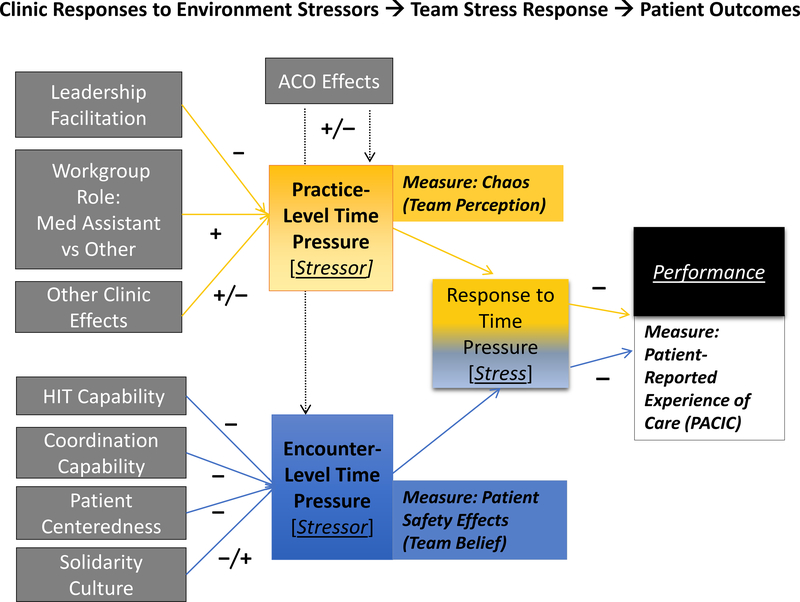Figure 1:
Stressor-Stress-Performance Theory Applied to Ambulatory Care. The diagram provides both the theoretical foundation for the study, and the linkages between theoretical concepts and the specific measures used to test hypotheses. The grey boxes show the organizational responses to environmental stressors that are hypothesized to influence time pressure stressors within appointments (encounter level, blue box) and in the clinic office (practice level, yellow box). Alongside each theoretical stressor concept is the related study measure (based on perceptions and beliefs of those in a clinic’s practice). In turn, the stress experienced from a time pressure stressor is posited to adversely affect the practice’s performance (black box) on any number of dimensions, including the patient-reported measure assessed in this study. Hypothesized positive (+) and negative (–) effects are shown for organizational determinants and patient consequences of each time pressure stressor.

